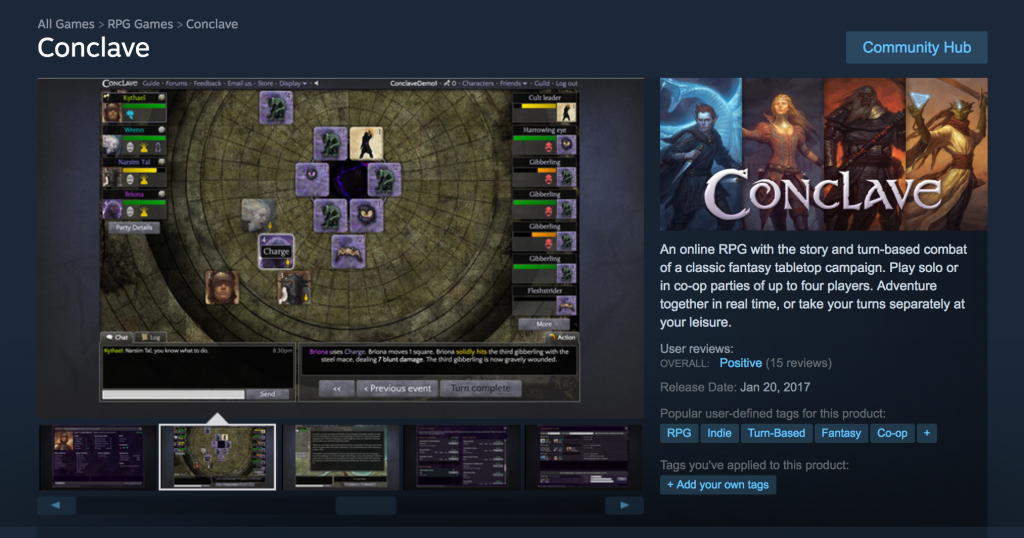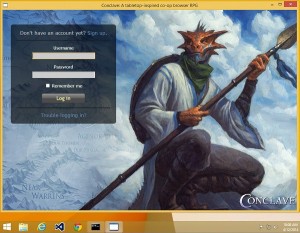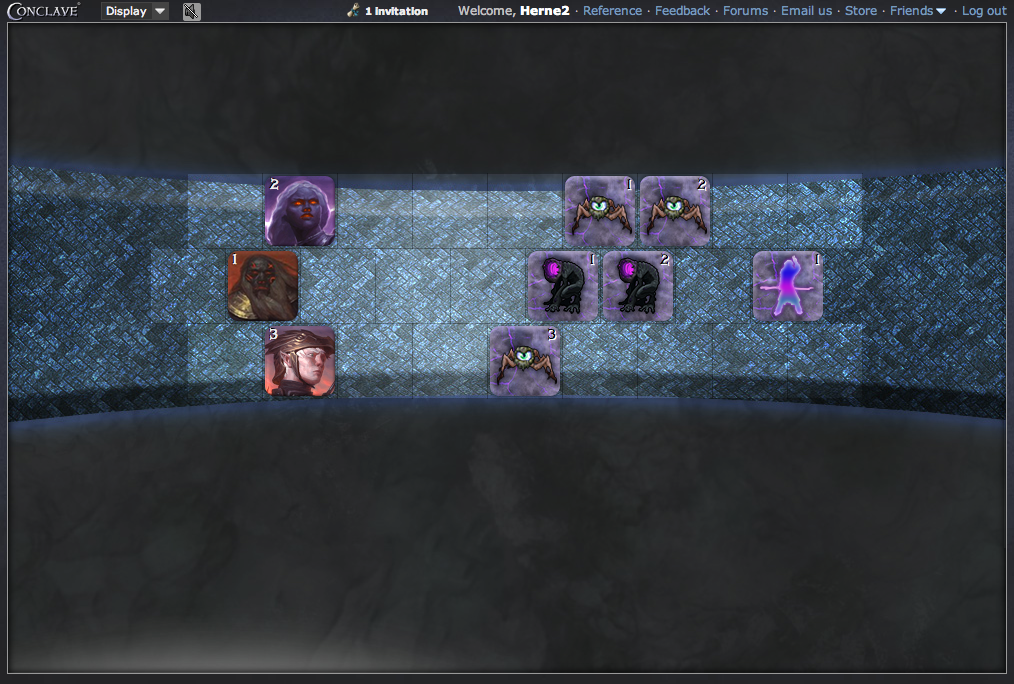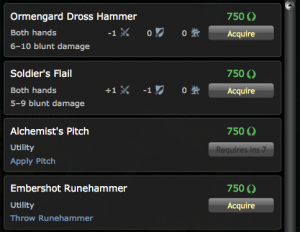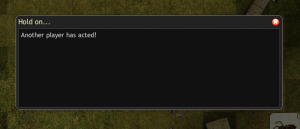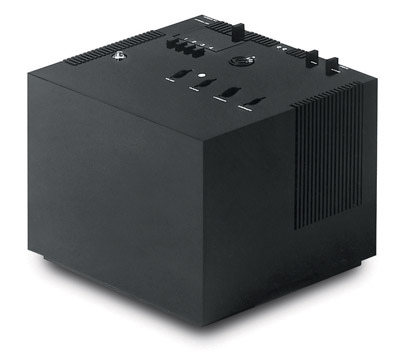
Level 2 + Agility 7 + Light Blade 14 = ??
Players have been asking for years what checks are, and how exactly we resolve attacks and other uncertain situations in the game. Many have written long forum posts with theories about how the numbers are crunched in Conclave, making their best guess at how useful a +5 attack bonus is, how painful a -2 penalty to Strength must be, and what your chances of success, great success, and epic success are at any given time. So far, every guess has landed far from the mark – and that’s not something to be proud of. We want Conclave’s resolution system to be easy for players to understand and apply, even while making sure it supports all the concepts in the game and offers a variety of possible results to many actions. Right now, the system does the latter, but not the former: it’s too much of a black box.
Conclave’s resolution system can be broken down into two pieces: finding score differentials, and using them to find a success range. Any time we need to see if an entity succeeds or fails at something, we calculate a score differential, derive the success range, roll some virtual dice, and get a result. This whole process is called a check.
A score differential is a comparison of some aspect of an entity that’s attempting some action – attacking a foe, sneaking past a guard, wielding the Earth Rune – against some aspect of the thing it’s trying to affect with that action. For example, a hob thug trying to hit a character compares its Attack score versus the character’s Melee Dodge. The result is a positive or negative number, which is the score differential. If that thug has an Attack of 12, and the character has a Melee Dodge of 7, the score differential is a 5.
We then use a set of equations to map the score differential to a range of probabilities for achieving different levels of success or failure, all on a percentile scale. That’s the success range. I won’t get into the details of the equations for deriving success ranges here, in part because they may well change in the coming months; the important thing to understand is that, given a score differential, they tell you the % chance that you’ll fail, succeed, succeed well, or succeed awesomely.
The big problem with score differentials right now is that some of our scores are on an entirely different scale than others. Specifically, traits and level are on one scale – a scale where numbers are generally between 1 and 10 – and skills are on a scale between 1 and 100. This means that every time you want to make a comparison between, say, my Tactics skill and your Insight trait, we are comparing apples to oranges, and have to do a conversion.
This might not sound so bad, and indeed it’s no big deal for the computers running Conclave. But the need for conversion makes it harder for players to understand what’s going on with any given check. I may personally know that a +5 to attack (your attack being based on your weapon skill) is roughly equivalent to a +1 to your Strength, but how is a player supposed to realize that? Even if we educate players as to how the calculation works, they are stuck constantly having to make a division-based conversion each time they want to weigh the odds and figure out how much a given bonus or penalty might affect them.
It gets worse, though. The conversion of skill scores to the same scale used by traits and level is not strictly divisory. (If you want to skip this part, don’t worry: the whole point is that the math is unnecessarily complicated and confusing, and there’s no need to go through the confusing complication in order to get it!) See, the problem is that skill scores go up at different rates right now, depending on whether you are good at the skill or only okay. Every archetype has a skill in which they are primary (e.g., Beacons are primary at Persuasion) and another that’s secondary (e.g., Beacons are secondary at Polearm). Each level, you get 7 skill points towards your primary skill, and 3 towards your secondary. This means that, as you reach higher and higher levels, the disparity between primary and secondary skills grows greater and greater. Left unchecked, this would mean that a level 10 Beacon is vastly better at Persuasion than at Polearm, even though the difference is fairly minor at level 1. This forces us to include a “normalization factor”, where your skill total is divided by your level when we calculate your final score for a score differential.
All of this works – and even works well – from the perspective of coming up with good probabilities of success under the wide variety of situations where we want to use checks. But it’s an absolute beast to try to understand and apply, as you can see from the above explanation. Heck, it can be challenging for us to intuit, and we designed the system!
So it’s time for an overhaul to the calculation of the scores we use in determining score differentials. Here’s the big change: skill scores are going away entirely. If you have a skill, you have it; if you don’t, you don’t, and that’s all there is to know. Some checks are skill checks: for those, you’ll get a bonus if you have the skill. You’ll still have a chance of success if you lack the skill; it just won’t be as high. Specifically, we’ll take your level, add the trait that’s related to the skill in question, and add a skill bonus to that if you have the skill.
This allows us to calculate all scores for score differentials using a single equation based purely on addition. We don’t have to divide skill scores by some factor to get them on the same scale as traits and level, nor divide them further by level to keep primary and secondary skills from growing widely variant as characters grow more powerful.
How will this affect you as a player? First, your character sheet is going to look a bit different. You’ll just see skills, not skills plus skill scores. Your attack and dodge scores will be lower, because those were based on skills scores. Attack, dodge, skill and check bonuses granted by equipment or abilities will be lower too. However, this is all just a change in scale, and it means that if you get a +1 bonus, whether it’s to Strength, Bludgeon skill, or directly to attack, it always has the same effect on your chance to hit with your maul.
All of this is subject to change by the time the final version of Conclave rolls out. We might put these changes into testing and find that players hate them. But we feel pretty confident that the basic theory here is correct, and that we’re taking a good step towards making Conclave a game that models all sorts of situations well, but is still easy to understand.

